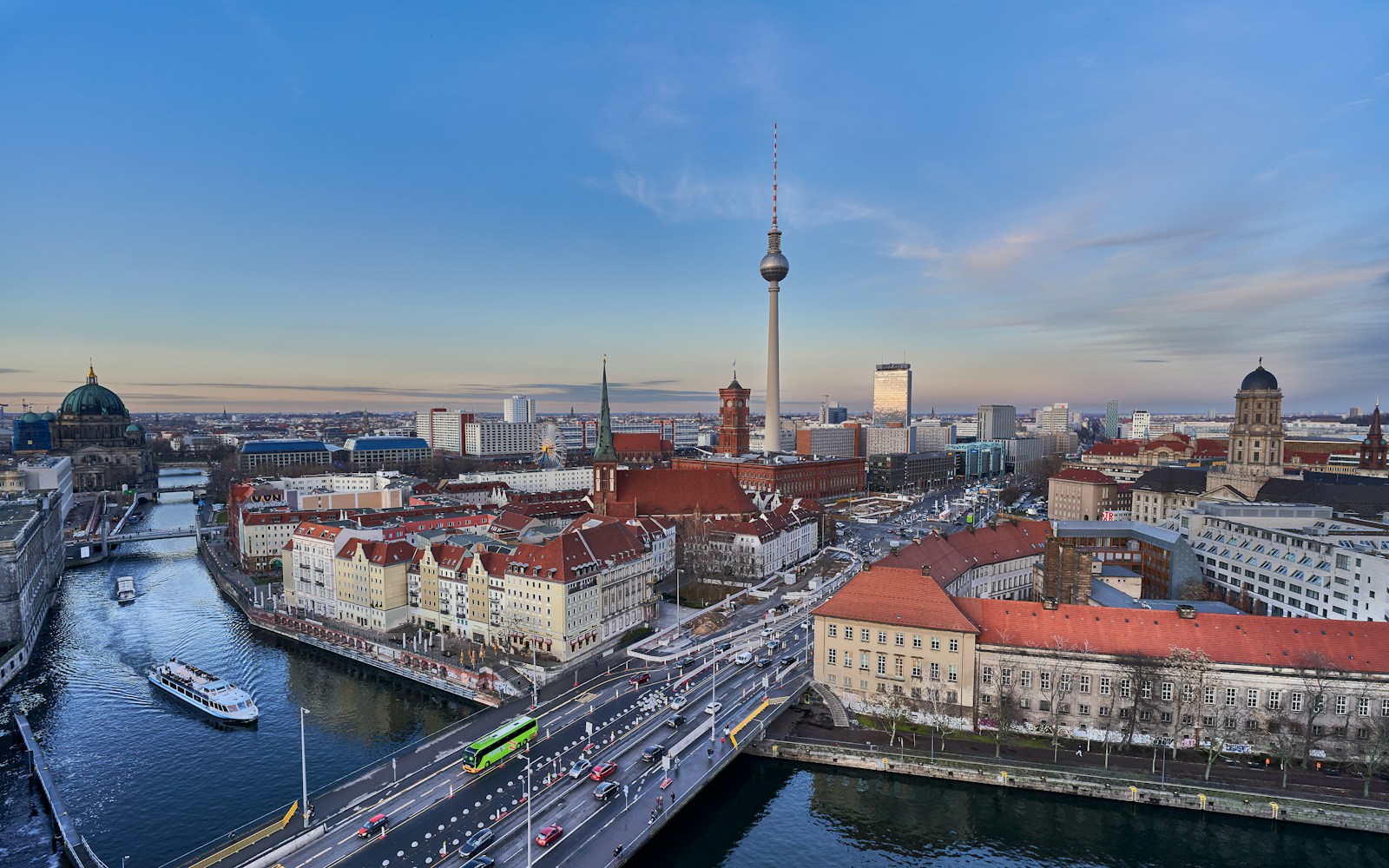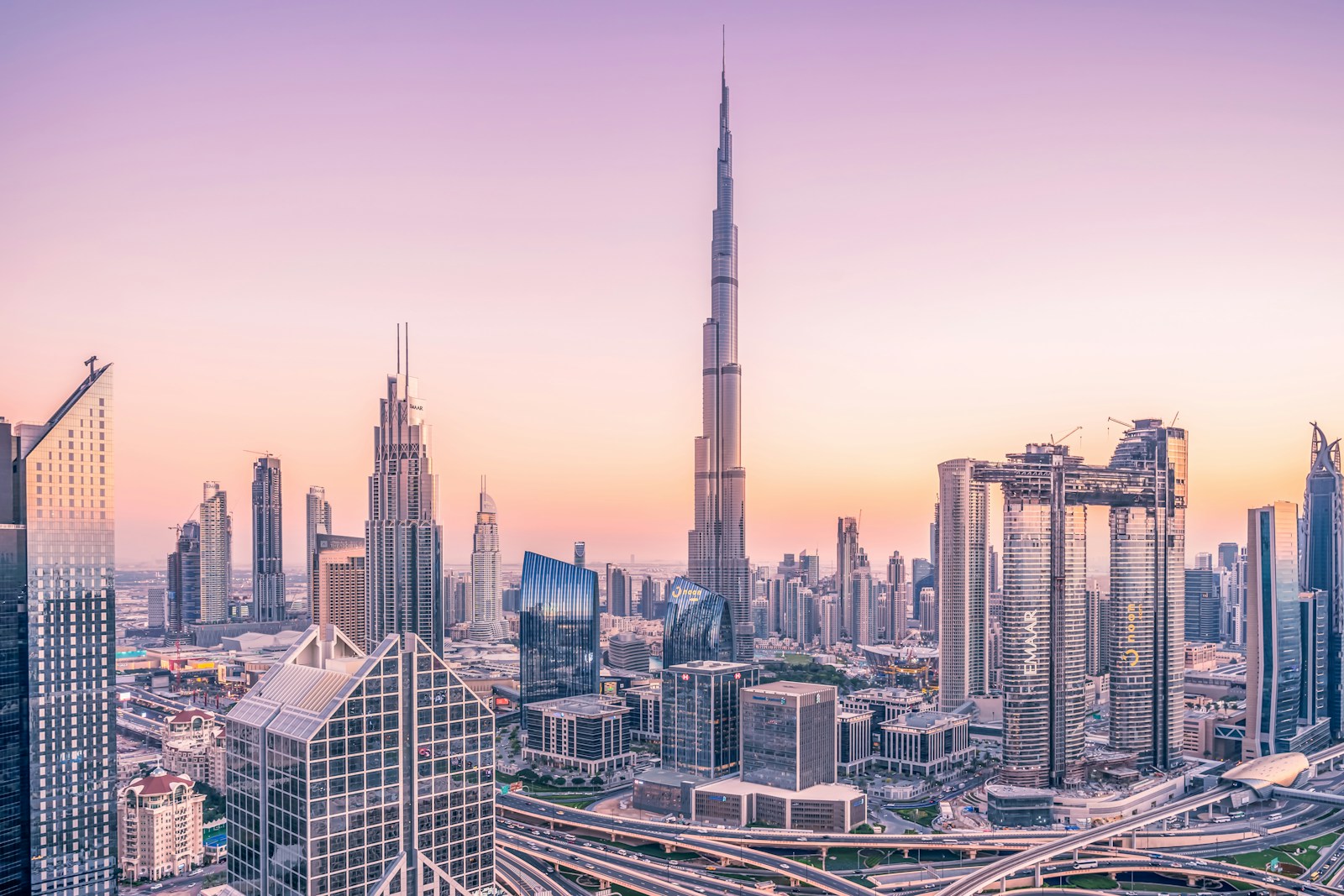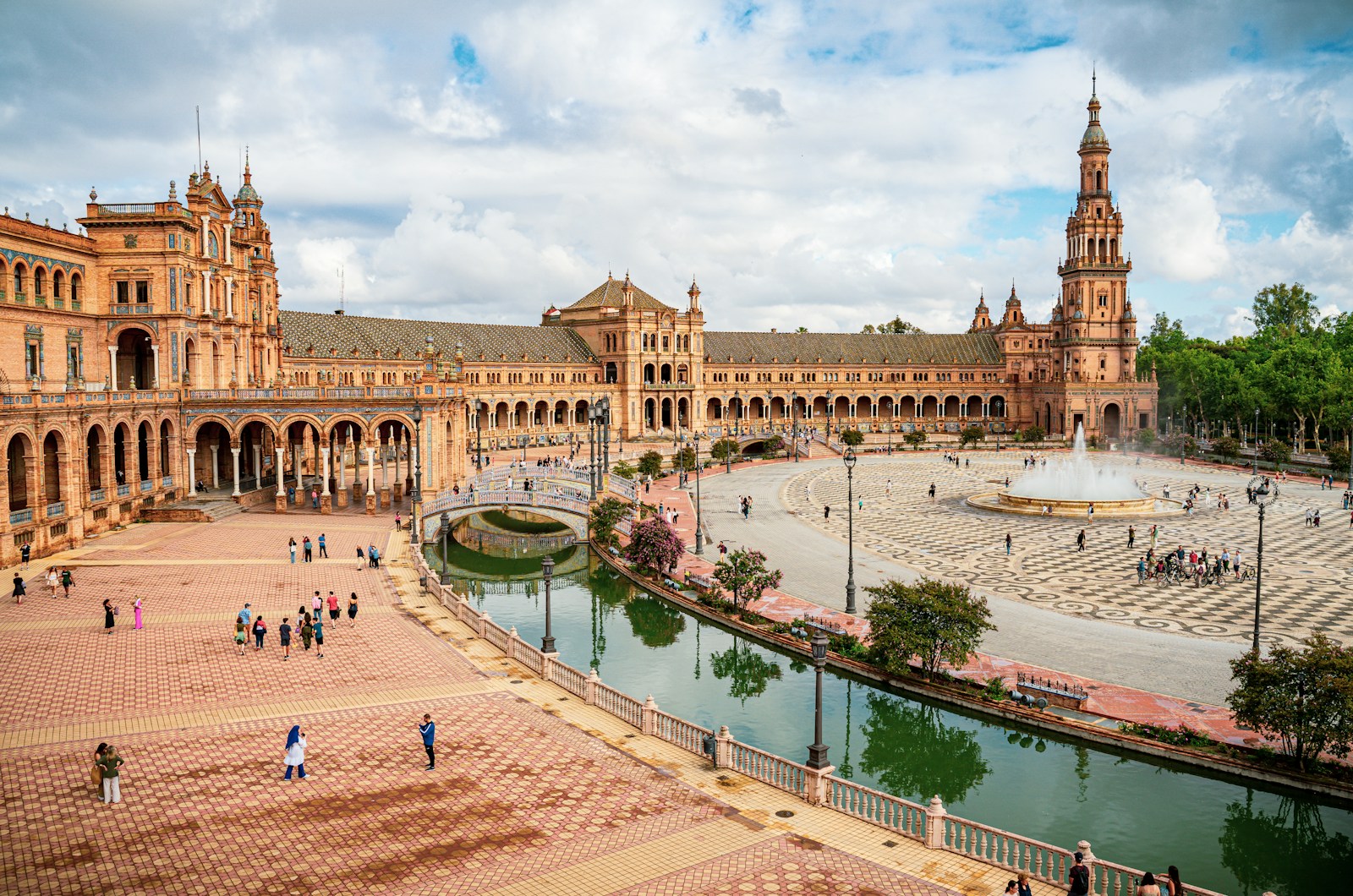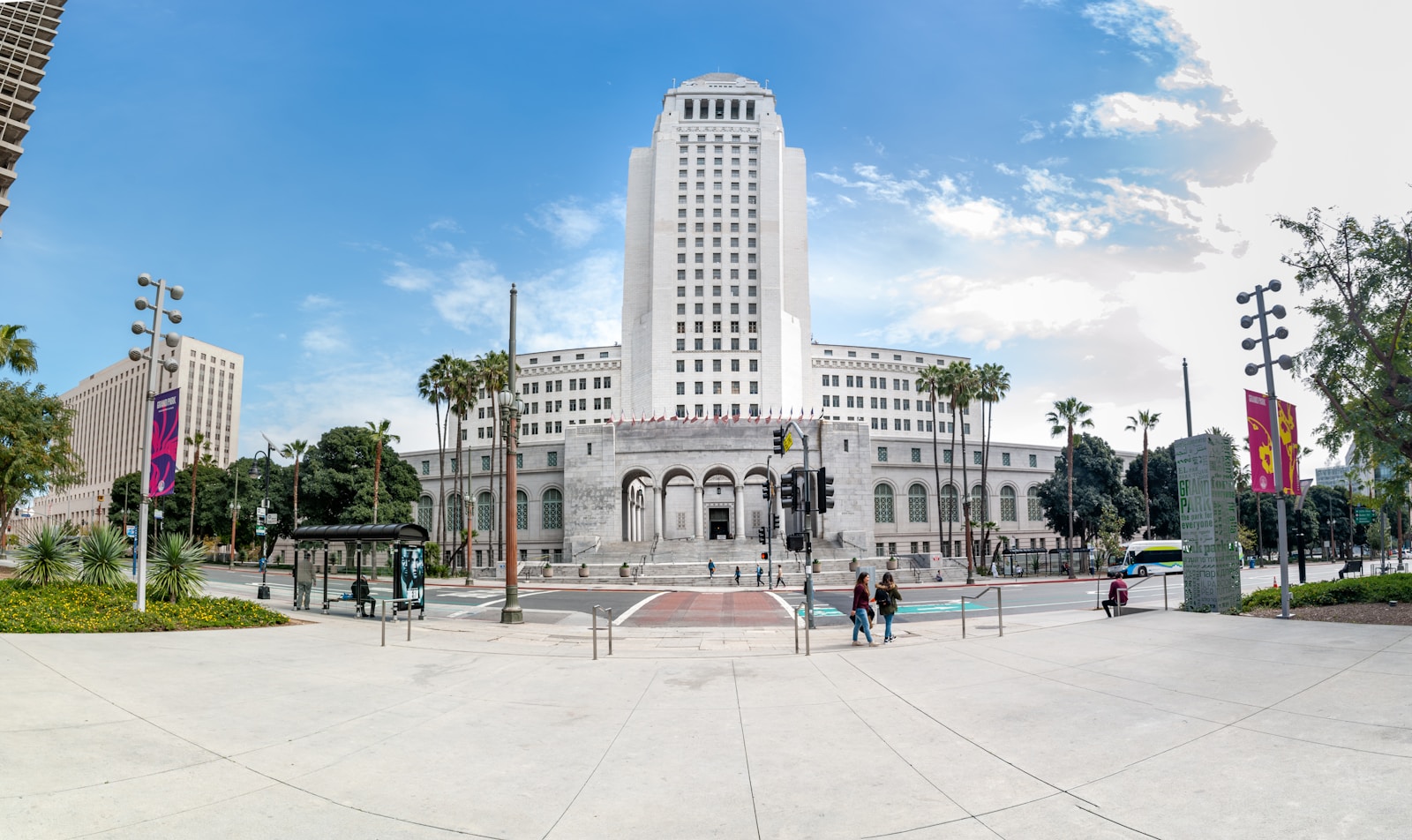Berlin, a city brimming with history, culture, and beauty, is a place that should be on everyone’s travel bucket list. With its rich past and vibrant present, Berlin offers a unique blend of old and new, making it a destination that resonates with people from all walks of life. Whether you’re a history buff, an art enthusiast, or simply someone who loves exploring new places, Berlin has something special to offer.
While Berlin is filled with countless attractions and experiences, there are a few places that stand out as absolute must-sees. If you’re short on time but want to make the most of your visit, these five iconic spots should be at the top of your list. Let’s dive into the heart of Berlin and explore the landmarks that define this incredible city.
1. The Brandenburg Gate: A Symbol of Unity and History
When you think of Berlin, one of the first images that might come to mind is the Brandenburg Gate. This iconic structure isn’t just a beautiful piece of architecture; it’s a symbol of Germany’s tumultuous history and its journey towards unity. Standing tall in the heart of Berlin, the Brandenburg Gate has witnessed some of the most significant moments in the city’s, and indeed the world’s, history.
Historical Significance and Architectural Beauty
The Brandenburg Gate was originally constructed in the late 18th century, during the reign of Frederick William II of Prussia. Designed by Carl Gotthard Langhans, the gate was inspired by the Propylaea, the grand entrance to the Acropolis in Athens. This neoclassical monument is made of sandstone and features twelve Doric columns, forming five passageways. The central passage was reserved for the royals, while the side passages were for common citizens.
Over the centuries, the Brandenburg Gate has been more than just a city gate; it has been a symbol of triumph, division, and ultimately, reunification. During the Cold War, the gate found itself in the no-man’s-land between East and West Berlin, isolated and inaccessible, a stark reminder of the city’s division. But in 1989, when the Berlin Wall fell, the Brandenburg Gate became the site of celebrations, symbolizing the reunification of Germany.
Pariser Platz: A Square of Elegance and History
The Brandenburg Gate is located in Pariser Platz, one of Berlin’s most beautiful and historically significant squares. The square is named after the French capital, Paris, in honor of the Prussian victory over Napoleon in 1814. Over the years, Pariser Platz has been home to some of Berlin’s most prestigious buildings, including the French and American embassies, as well as the renowned Hotel Adlon.
Strolling through Pariser Platz, you can’t help but feel the weight of history that surrounds you. The elegant facades of the buildings, many of which have been meticulously restored after being damaged during World War II, create a stunning backdrop for the Brandenburg Gate. This area is also a hub of activity, with street performers, artists, and tourists adding to the lively atmosphere.
A Photographic Masterpiece
The Brandenburg Gate is a favorite subject for photographers, and it’s easy to see why. Whether you visit during the day, when the gate is bathed in sunlight, or at night, when it’s beautifully illuminated, the Brandenburg Gate never fails to impress. The Quadriga, a statue of a chariot drawn by four horses and driven by the Roman goddess Victoria, sits atop the gate, adding to its grandeur.
If you’re visiting Berlin, be sure to spend some time at the Brandenburg Gate, soaking in its history and significance. It’s more than just a landmark; it’s a testament to Berlin’s resilience and the enduring spirit of its people.
2. The Berlin Wall: A Monument to Division and Reconciliation
No visit to Berlin would be complete without exploring the remnants of the Berlin Wall. This concrete barrier, which once divided the city into East and West, stands as a powerful reminder of the Cold War and the impact it had on Berlin and the world. Though much of the wall has been dismantled, several sections remain, each telling a story of division, resistance, and, ultimately, reconciliation.
A Brief History of the Berlin Wall
The Berlin Wall was erected in 1961 by the German Democratic Republic (East Germany) to prevent East Berliners from fleeing to the West. For nearly three decades, the wall stood as a physical and ideological barrier between the communist East and the capitalist West. It was a stark symbol of the Cold War, dividing families, friends, and a nation.
The wall stretched for 155 kilometers (about 96 miles), cutting through the heart of Berlin. It was fortified with guard towers, barbed wire, and a “death strip”—a no-man’s-land patrolled by armed guards instructed to shoot anyone attempting to cross. The wall not only divided a city but also became a global symbol of oppression and the struggle for freedom.
The Fall of the Berlin Wall
On November 9, 1989, after a series of political changes and mounting pressure from East Germans demanding freedom, the Berlin Wall finally fell. This momentous event marked the beginning of the end of the Cold War and led to the reunification of Germany. The images of jubilant Berliners tearing down the wall with hammers and chisels remain etched in the collective memory of people around the world.
Today, the Berlin Wall is no longer a barrier, but a symbol of hope and the triumph of the human spirit. The remaining sections of the wall have been preserved as a historical monument, serving as a powerful reminder of the past and a call for unity in the future.
The East Side Gallery: A Canvas of Freedom
One of the most famous sections of the Berlin Wall is the East Side Gallery. Stretching for 1.3 kilometers (about 0.8 miles) along the Spree River, the East Side Gallery is the longest remaining stretch of the wall. After the fall of the wall, artists from around the world came to Berlin to transform this section into an open-air gallery, covering it with murals that express themes of freedom, peace, and reconciliation.
The East Side Gallery features over 100 paintings, each telling a unique story. Some of the most iconic images include the “Fraternal Kiss” between Soviet leader Leonid Brezhnev and East German leader Erich Honecker, and the mural depicting a car breaking through the wall, symbolizing the end of division. Walking along the East Side Gallery, you can feel the emotions and hopes of a generation captured in these vibrant works of art.
Other Key Locations Related to the Berlin Wall
In addition to the East Side Gallery, there are several other important sites where you can learn more about the Berlin Wall and its impact. Potsdamer Platz, once a bustling square before the wall split it in two, is now a modern hub of commerce and culture. Here, you can see a section of the wall and a BT6-type watchtower, which once served as a lookout point for East German border guards.
Checkpoint Charlie, another iconic site, was the most famous crossing point between East and West Berlin during the Cold War. Today, it’s a popular tourist spot, complete with a replica of the original checkpoint booth and a museum dedicated to the history of the Berlin Wall. The stories of daring escapes and the tension of the Cold War come to life as you explore this historic site.
Finally, the Brandenburg Gate itself is deeply connected to the history of the Berlin Wall. During the Cold War, the gate stood in the no-man’s-land, inaccessible to both East and West Berliners. When the wall fell, it became a symbol of reunification, as thousands gathered at the gate to celebrate the end of division. Visiting these sites offers a poignant and educational experience, providing insight into one of the most challenging periods in Berlin’s history.
3. Museum Island: A Treasure Trove of Art and History
For those who love art, history, and culture, Museum Island is an absolute must-see when visiting Berlin. Located on the northern half of an island in the Spree River, this UNESCO World Heritage site is home to five world-class museums, each offering a unique glimpse into the past. From ancient artifacts to masterpieces of European art, Museum Island is a cultural treasure trove that will captivate your imagination.
A Cultural and Architectural Marvel
Museum Island, or Museumsinsel as it’s known in German, is not just a collection of museums; it’s an architectural wonder in its own right. The island’s museums were built over a period of more than a century, from the early 19th to the early 20th century, each with its own distinct style and purpose. The grand facades and intricate details of these buildings are a testament to Berlin’s commitment to preserving and celebrating culture.
The idea of Museum Island was conceived by King Frederick William IV of Prussia, who envisioned a “sanctuary of art and science.” The first museum to be built was the Altes Museum (Old Museum), designed by the famous architect Karl Friedrich Schinkel. Over the years, more museums were added, each dedicated to a different aspect of art and history. Together, these institutions form one of the most important museum complexes in the world.
The Neues Museum: Home of Nefertiti
The Neues Museum (New Museum) is perhaps the most famous of the five museums on Museum Island, largely due to its star attraction: the bust of Nefertiti. This stunning sculpture of the ancient Egyptian queen, with her regal bearing and delicate features, is one of the most recognizable works of art in the world.
The bust, which dates back to around 1345 BC, was discovered by German archaeologist Ludwig Borchardt in 1912 and has been housed in the Neues Museum since its restoration in the early 2000s.
In addition to the bust of Nefertiti, the Neues Museum boasts an impressive collection of Egyptian artifacts, including mummies, jewelry, and statues. The museum also features exhibits on prehistoric and early history, making it a fascinating destination for anyone interested in the ancient world.
The Pergamon Museum: A Journey Through Ancient Civilizations
The Pergamon Museum is another highlight of Museum Island, renowned for its collection of monumental architecture from ancient civilizations. The museum is named after the ancient city of Pergamon in present-day Turkey, from which it houses the famous Pergamon Altar. This massive structure, with its intricate friezes depicting the battle between the gods and giants, is one of the most significant archaeological finds of the 19th century.
In addition to the Pergamon Altar, the museum features other incredible reconstructions, such as the Ishtar Gate of Babylon and the Market Gate of Miletus. These ancient structures, with their vibrant colors and intricate details, offer a rare opportunity to step back in time and experience the grandeur of ancient civilizations.
The Altes Museum: A Glimpse into Ancient Greece and Rome
The Altes Museum, the oldest museum on Museum Island, is dedicated to the art and culture of ancient Greece and Rome. Its collection includes sculptures, pottery, and other artifacts that provide insight into the daily lives, religious practices, and artistic achievements of these ancient civilizations. The museum’s rotunda, inspired by the Pantheon in Rome, is a stunning space that houses some of the most important works in the collection.
Visitors to the Altes Museum can explore exhibits on Greek mythology, Roman portraiture, and the development of classical art. The museum also hosts temporary exhibitions that delve deeper into specific aspects of ancient history, making it a must-visit for anyone interested in the classical world.
The Bode Museum: A Celebration of Sculpture and Byzantine Art
The Bode Museum, located at the northern tip of Museum Island, is home to an extensive collection of sculptures, as well as Byzantine art and coins. The museum’s collection spans from the early Middle Ages to the 18th century, with a particular focus on religious art. One of the highlights is the collection of Italian Renaissance sculptures, which includes works by artists such as Donatello and Bernini.
The Bode Museum’s Byzantine collection is equally impressive, featuring icons, mosaics, and other religious artifacts from the Eastern Roman Empire. The museum also houses the Münzkabinett (Coin Cabinet), one of the most significant numismatic collections in the world, with coins and medals from ancient times to the modern era.
The Alte Nationalgalerie: A Showcase of 19th-Century Art
The final museum on Museum Island is the Alte Nationalgalerie (Old National Gallery), which is dedicated to 19th-century art. The museum’s collection includes works by some of the most important artists of the period, including Caspar David Friedrich, Adolph von Menzel, and Edouard Manet. The gallery’s neoclassical architecture, with its grand staircase and sweeping views of Berlin, provides a fitting backdrop for the art on display.
Visitors to the Alte Nationalgalerie can explore a wide range of artistic styles, from Romanticism to Impressionism. The museum’s collection of German art is particularly noteworthy, offering a deep dive into the cultural and political currents that shaped 19th-century Germany.
A Cultural Journey Through Time
Museum Island is more than just a collection of museums; it’s a journey through time, offering a glimpse into the art, history, and culture of civilizations spanning thousands of years. Whether you’re admiring the graceful lines of a Greek statue, standing in awe before the grandeur of the Pergamon Altar, or contemplating the serene beauty of Nefertiti, Museum Island provides an experience that is both intellectually stimulating and emotionally moving.
4. The Reichstag: A Testament to Germany’s Resilience
The Reichstag building, with its distinctive glass dome, is one of Berlin’s most recognizable landmarks and a powerful symbol of Germany’s turbulent history and democratic future. As the seat of the German Parliament (Bundestag), the Reichstag has witnessed some of the most dramatic events in German history, from the rise of the Nazi regime to the reunification of Germany. Today, it stands as a monument to the resilience of the German people and their commitment to democracy.
A Brief History of the Reichstag
The Reichstag was originally designed by architect Paul Wallot and completed in 1894. Its design reflects the grandeur of a classical temple, with a massive portico supported by Corinthian columns. The inscription “Dem Deutschen Volke” (“To the German People”) above the entrance emphasizes the building’s role as a symbol of the nation’s democratic aspirations.
However, the Reichstag’s history is marked by tragedy and conflict. In 1933, just weeks after Adolf Hitler was appointed Chancellor of Germany, the Reichstag was set on fire in an event that became known as the Reichstag Fire. The Nazis used the fire as a pretext to suspend civil liberties and eliminate political opposition, marking the beginning of their totalitarian rule.
During World War II, the Reichstag was severely damaged by Allied bombing and the subsequent battle for Berlin. After the war, the building was left in ruins, a stark reminder of the destruction wrought by the conflict. It wasn’t until after the fall of the Berlin Wall and the reunification of Germany that the Reichstag was fully restored and returned to its original purpose as the seat of the German Parliament.
The Glass Dome: A Symbol of Transparency and Democracy
One of the most striking features of the modern Reichstag is its glass dome, designed by British architect Sir Norman Foster during the building’s renovation in the 1990s. The dome, which sits atop the historic structure, is a symbol of transparency and openness in government. Visitors can walk up a spiraling ramp inside the dome, offering panoramic views of Berlin and a direct line of sight into the parliamentary chamber below.
The design of the glass dome is both functional and symbolic. The natural light that floods the chamber below serves as a metaphor for the transparency of the democratic process, while the ability of visitors to look down on the proceedings emphasizes the idea that the government is accountable to the people. The dome has become a popular attraction for both tourists and Berliners, offering a unique perspective on the city and its government.
The Federal Band: A Complex of Power
The Reichstag is part of a larger architectural complex known as the Federal Band (Band des Bundes), which stretches along the banks of the Spree River. The Federal Band includes several other government buildings, such as the Chancellery (Kanzleramt) and the Paul Löbe House, where parliamentary committees meet. The complex is eight times larger than the White House in Washington, D.C., reflecting the importance of Berlin as the center of German political power.
The Federal Band is a blend of old and new, with the historic Reichstag at its center and modern, minimalist structures flanking it on either side. The contrast between the classical architecture of the Reichstag and the sleek lines of the new buildings symbolizes Germany’s journey from its tumultuous past to its dynamic present and future.
A Reflection on Germany’s Journey
Visiting the Reichstag is not just about admiring its architecture or enjoying the view from the glass dome; it’s about understanding Germany’s complex history and the resilience of its people. The building’s turbulent past, from the Reichstag Fire to the bombings of World War II, is a reminder of the challenges Germany has faced. But its restoration and the addition of the glass dome represent the country’s commitment to democracy, transparency, and a hopeful future.
For anyone interested in history, politics, or architecture, the Reichstag is a must-visit. It offers a powerful and moving experience, allowing visitors to connect with the history of Germany and the principles that guide its future.
5. Sachsenhausen Concentration Camp: A Somber Reminder of the Past
Located just outside Berlin, the Sachsenhausen Concentration Camp is a place of profound historical significance and one that offers a stark reminder of the atrocities committed during the Holocaust. While it may not be an easy visit, it is an important one, providing insight into the horrors of the past and the resilience of those who suffered.
The History of Sachsenhausen
Sachsenhausen was established in 1936 by the SS as one of the first concentration camps in Nazi Germany. Located in the town of Oranienburg, just 35 kilometers north of Berlin, the camp was initially used to imprison political opponents of the Nazi regime. Over time, it became a site of unimaginable suffering, where more than 200,000 people were held, including Jews, Romani people, disabled individuals, and others deemed “undesirable” by the Nazis.
The conditions at Sachsenhausen were brutal, with prisoners subjected to forced labor, starvation, medical experiments, and executions. Many of those who were sent to the camp did not survive. Sachsenhausen also served as a training center for SS officers, who would go on to command other concentration camps across Europe.
The camp was liberated by Soviet forces in April 1945, but its legacy of suffering and death remains a haunting chapter in history. Today, Sachsenhausen stands as a memorial and museum, dedicated to preserving the memory of the victims and educating future generations about the dangers of hatred and intolerance.
A Visit to Sachsenhausen
Visiting Sachsenhausen is a somber and emotional experience. The site has been preserved as a memorial, with many of the original buildings and structures still standing. As you walk through the gates bearing the infamous inscription “Arbeit macht frei” (“Work sets you free”), you can’t help but feel the weight of the history that took place here.
One of the most poignant areas of the camp is Barrack 38, which has been converted into a museum that documents the lives of the prisoners who were held at Sachsenhausen. Through photographs, documents, and personal belongings, the museum tells the stories of those who suffered and died in the camp. It’s a deeply moving experience, providing a human face to the atrocities that occurred here.
The punishment cells, where prisoners were subjected to torture and inhumane conditions, offer another stark reminder of the cruelty that took place at Sachsenhausen. The infirmary, where medical experiments were conducted on prisoners, is also preserved, providing insight into the horrors of the Nazi regime’s pseudoscientific practices.
Reflecting on the Lessons of History
While a visit to Sachsenhausen is undoubtedly difficult, it is also incredibly important. The camp serves as a reminder of the atrocities committed during the Holocaust and the dangers of unchecked power and prejudice. It is a place of reflection, where visitors can pay their respects to the victims and contemplate the lessons of history.
For those who may find it overwhelming, it’s important to approach the visit with sensitivity and an open heart. Sachsenhausen is not just a historical site; it’s a place of memory and mourning, where the voices of those who suffered still resonate. It’s a powerful reminder of the importance of remembering the past so that we can work towards a future where such atrocities never happen again.
Conclusion: Berlin – A City of History, Resilience, and Renewal
Berlin is a city like no other. Its history is complex, its culture rich, and its spirit resilient. From the Brandenburg Gate to the Berlin Wall, Museum Island to the Reichstag, and the somber grounds of Sachsenhausen, each of these sites tells a story of a city that has been through tremendous turmoil and emerged stronger for it.
Whether you’re exploring Berlin’s grand monuments, delving into its history, or reflecting on its past, you’ll find that this city has a unique ability to connect you with the broader human experience. Berlin is not just a place on a map; it’s a symbol of hope, renewal, and the enduring strength of the human spirit.
If you have the chance to visit Berlin, take the time to truly experience it. Walk through its streets, listen to its stories, and let its history speak to you. Berlin is a city that doesn’t just tell you about the past—it invites you to be a part of its ongoing journey.




